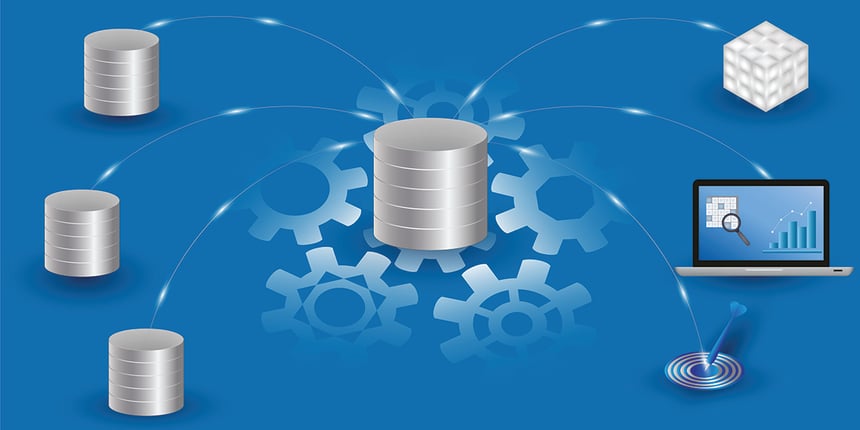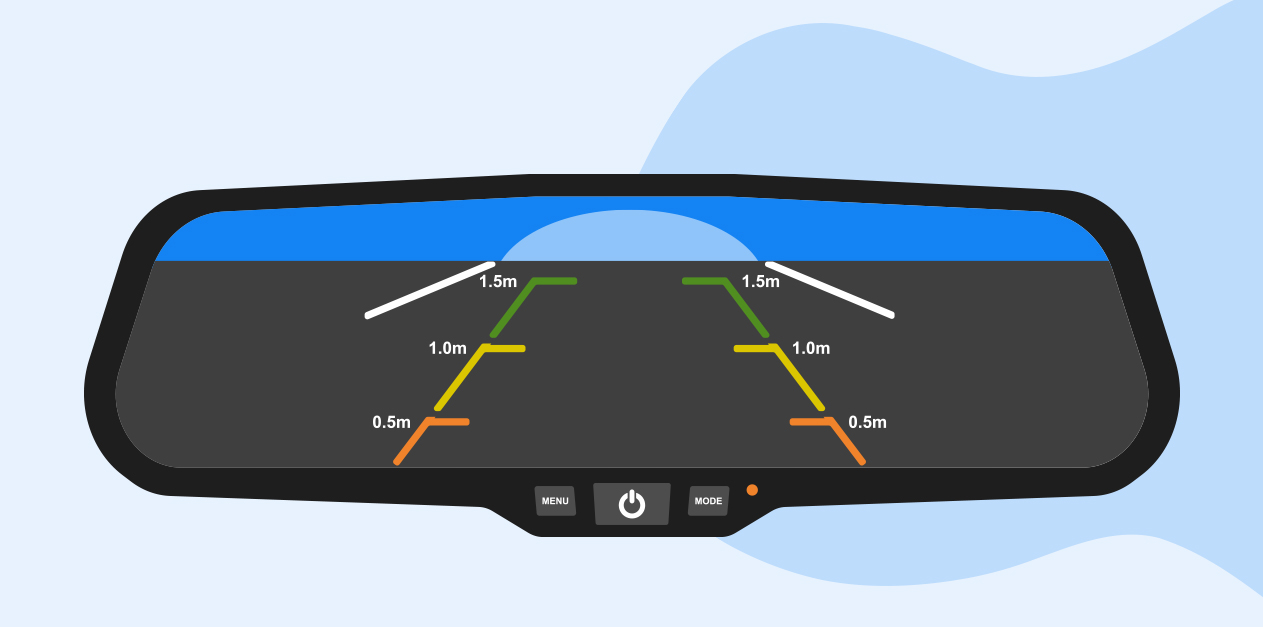Although data warehouses and lakes are often associated with offline analytics, Reverse ETL can operationalize actionable insights to make a direct and ongoing impact on the business. Read on to learn more.
Table of Contents
Reverse ETL and the Data-Driven Promise
What is Reverse ETL?
Why is Reverse ETL Important?
3 Use Cases for Reverse ETL
Weaknesses and Constraints of Existing Reverse ETL Solutions
A Better Way: The Data Product Approach to Reverse ETL
Reverse ETL and the Data-Driven Promise
Most enterprises that strive to be data-driven, store and analyze massive volumes of data in data warehouses data data lakes. Indeed, centralized data repositories enable organizations to tear down data silos, standardize data management, fortify data security, and enable data analysis, by creating a single source of truth.
But despite their intended purpose, data lakes and data warehouses themselves can become data silos.
While ETL and, more recently, ELT, make it relatively easy to prepare and move data into a centralized data store, it’s much harder to systematically extract the insights out of data warehouses and lakes and integrate them into the business processes that run the operations.
That’s a problem for business users involved in sales, marketing, customer service, manufacturing, and other departments across the organization, who require actionable insights to drive business decisions and personalize customer experiences. With the insights siloed in the data warehouses and lakes, business users are forced to use yet another system for their day-to-day operations.
Reverse ETL was developed to solve this problem.
In this article, we’ll explain what reverse ETL is all about, how it empowers companies to actually fulfill their data-driven promise, and why a data product approach serves the purpose of reverse ETL most effectively.
What is Reverse ETL?
As the name suggests, reverse ETL does the opposite of ETL.
ETL (Extract, Transform, Load) is a method of data pipelining, moving data from one or more sources into a target data store. It has been the standard approach to gathering, processing, and delivering data for decades. ETL allows companies to synchronize different data environments, migrate data from legacy to modern systems, and create centralized data stores, such as a data warehouse or data lake, for analytical workloads.
Recently, ELT (Extract, Load, Transform) has emerged as a popular approach to pipelining data into lakes. In ELT, data is transformed only after it is loaded to the target data lake, which makes it easier and faster to get raw data in the hands of data scientists for processing and analysis.
ETL and ELT have their advantages and disadvantages, which should be carefully assessed by data teams prior to selecting the right approach for their workloads.
Reverse ETL moves data from a centralized repository (which now acts as the source) into one or more operational systems (that now act as the target). Reverse ETL essentially closes the ETL/ELT loop by feeding the operational systems with actionable insights derived in the data warehouse and lake.
Specifically, reverse ETL is the process of replicating a dataset from a data warehouse or lake, and moving it to operational systems of record, such CRM, ERP, SCM, or customer support, where business teams can easily access and use it.

ETL pipelines data from a variety systems to centralized DWHs and lakes.
Reverse ETL pipelines operational insights from these DWHs and lakes to systems of record.
It’s important to note that while companies can use both ETL and ELT to move data into a data warehouse or lake, the reverse can only be done with ETL. This is because data must be transformed to meet the formatting requirements of the third-party system before being loaded into it.
Why is Reverse ETL Important?
Without Reverse ETL, data that could be used to enhance customer experiences, increase revenues, and drive operational efficiencies remains confined within the data warehouse and data lake.
By moving this data out of the big data stores and into the business applications, Reverse ETL enables any team – such as sales, customer support, marketing, and product – to access the insights they need within the systems they use every day. It empowers line-of-business users to make decisions, or take action, based on real-time operational intelligence.
Reverse ETL also reduces reliance on data engineers and BI developers, by enabling business users to leverage insights as part of their business processes. For organizations striving to become more data-driven, Reverse ETL is a must.
3 Use Cases for Reverse ETL
Here are 3 of the top use cases for Reverse ETL:
-
Operational analytics
One of the most valuable aspects of reverse ETL is its ability to fuel operational analytics, the practice of delivering actionable insights to business operations teams within the systems they use each day.
Operational analytics empower domains across the organization by unlocking access to operational insights that can be used to drive data-backed decisions.
For example, sales could use real-time insights to offer the most suitable product to a specific customer while speaking with them on the phone. Or marketing could optimize campaign budgets according to product usage, to ensure that its campaigns target only the customer segments that have low product usage rates. -
Data integration
Reverse ETL eliminates manual data extraction and upload processes, such as CSV pulls and imports, and automatically integrates the data from the data lake/ DWH into the operational systems, seamlessly provisioning it for business use. It also reduces the need among business users to constantly pivot between their operational systems and BI reports to perform certain workflows.
Instead, reverse ETL feeds relevant data – such as high-valued customer lists, KPIs, and predictions – to the correct operational systems at a predefined cadence, or according to certain business triggers (e.g., automatically populating webinar attendee information into the CRM as new leads every time there’s a new webinar).
Reverse ETL serves not only business users that use operational systems, but also reduces the burden from data scientists, analysts, and engineers. -
SaaS integrations
As companies integrate more and more SaaS tools, there’s a rising need to share data between them. However, custom point-to-point integrations quickly overwhelm data teams and are impossible to manage at scale.
Reverse ETL can help with SaaS integrations by eliminating the need for bespoke point-to-point integrations. Instead, it allows you to pull all of the relevant operational data from the data warehouse, then push it out to the relevant SaaS tools.
As a result, data teams have more time to focus on the innovative and high-impact data work they were hired to do.
Weaknesses and Constraints of Existing Reverse ETL Solutions
Reverse ETL offers many valuable benefits to both business users and data teams. However, many of the existing tools today are limited by common weaknesses:
-
No business context
Reverse ETL tools don’t organize the data according to business entities, and therefore lack necessary business context. -
No system of record
Reverse ETL solutions assume that a system of record exists to capture the data from the data warehouse or data lake, but what if there is no operational system in place to capture this data (e.g. customer KPIs)? -
No support for real-time
Current reverse ETL tools can’t operationalize insights in real time, once they are gleaned in the data warehouse or lake. -
No way to support ETL and reverse ETL simultaneously
Today, most tools that provide reverse ETL capabilities, can’t also offer ETL or ELT (from the same solution), which means businesses need to implement and configure multiple tools. This adds a significant cost burden, and another layer of technical complexity in data management.
A Better Way: The Data Product Approach to Reverse ETL
There’s an emerging and robust approach for overcoming the shortcomings that inhibit most existing reverse ETL solutions: Data Products.
Data products are revolutionizing data pipelining. A data product is a reusable data asset that delivers to authorized data consumers a complete and trusted dataset related to their business need. It is often times related to specific business entities, such as customer, vendor, credit card, payment, or store.
The K2View Data Product Platform ingests and manages all the data associated with a specific business entity in its own, encrypted Micro-Database™, enabling real-time data delivery at enterprise scale. A data product manages one Micro-Database for every instance of a business entity, and can be deployed in either data mesh or data fabric implementations.
The K2View Data Product Platform supports Reverse ETL for enterprises that aim to tear down data silos, increase revenue, enhance the customer experience, and become truly data-driven. It does so, by being able to:
-
Move and process data in real time
Taking a data-as-a-product approach enables data teams to capture actionable insights extracted from the data warehouse or lake in real time, and publish them into operational systems of record.
-
Treat data in the context of business
Because data products correspond to business entities, they provide a holistic and complete data “picture” to support business-oriented decision making.
-
Act as a system of record
A Reverse ETL solution based on data products can act as a system of record for new data attributes, such as a customer’s propensity to churn, where those attributes are not managed in an existing system of record.
-
Pipeline bi-directionally
A data product-driven platform enables both ETL and reverse ETL, so the data lake can be a data source, as well as a destination – for the same platform.
-
Support multiple use cases
Finally, data products power multiple use cases across business domains. Not only do they democratize access to data and insights across the organization, but they also let data teams focus on their most complex and value-adding tasks.













